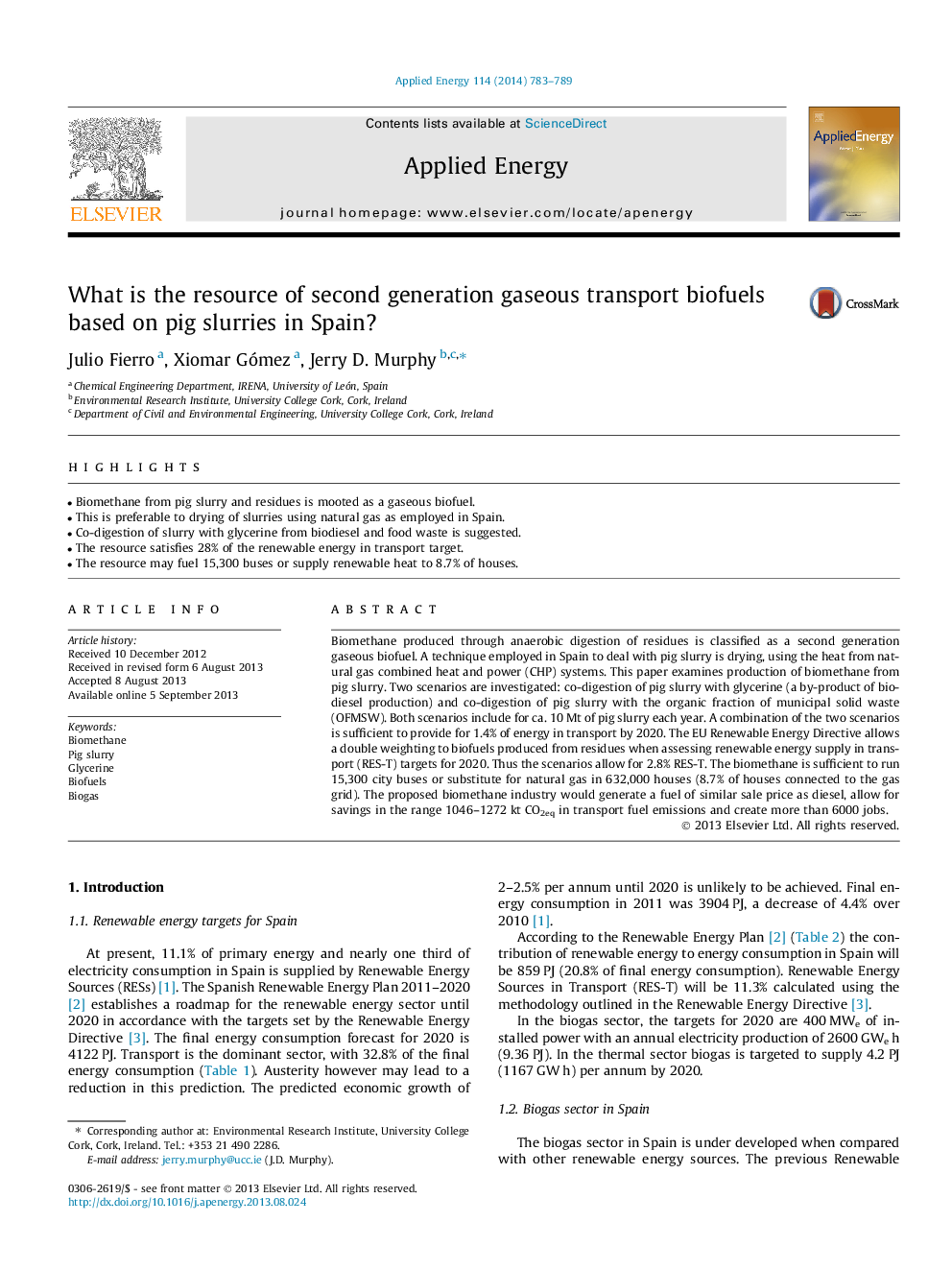| Article ID | Journal | Published Year | Pages | File Type |
|---|---|---|---|---|
| 6691771 | Applied Energy | 2014 | 7 Pages |
Abstract
Biomethane produced through anaerobic digestion of residues is classified as a second generation gaseous biofuel. A technique employed in Spain to deal with pig slurry is drying, using the heat from natural gas combined heat and power (CHP) systems. This paper examines production of biomethane from pig slurry. Two scenarios are investigated: co-digestion of pig slurry with glycerine (a by-product of biodiesel production) and co-digestion of pig slurry with the organic fraction of municipal solid waste (OFMSW). Both scenarios include for ca. 10Â Mt of pig slurry each year. A combination of the two scenarios is sufficient to provide for 1.4% of energy in transport by 2020. The EU Renewable Energy Directive allows a double weighting to biofuels produced from residues when assessing renewable energy supply in transport (RES-T) targets for 2020. Thus the scenarios allow for 2.8% RES-T. The biomethane is sufficient to run 15,300 city buses or substitute for natural gas in 632,000 houses (8.7% of houses connected to the gas grid). The proposed biomethane industry would generate a fuel of similar sale price as diesel, allow for savings in the range 1046-1272Â kt CO2eq in transport fuel emissions and create more than 6000 jobs.
Related Topics
Physical Sciences and Engineering
Energy
Energy Engineering and Power Technology
Authors
Julio Fierro, Xiomar Gómez, Jerry D. Murphy,
